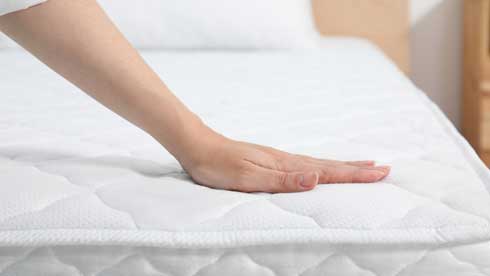A good mattress is essential for a healthy and restful night’s sleep. It should promote proper posture and sleeping positions, relieve pressure points and support your body weight.
It should also be made from quality materials that last (ideally without tons of nasty chemicals). Here are some tips to help you choose the right mattress for you.
The Size
When it comes to shopping for a mattress, there are many factors that influence the comfort and support you’ll experience. But one aspect that often gets overlooked is the size of the mattress. Choosing the right mattress size is important because it can affect both your comfort and the overall aesthetics of your bedroom.
The size of the mattress will also determine how much room you have to move around while sleeping. Ideally, you want to choose a mattress that fits in your room’s dimensions without feeling cramped or overcrowded.
The most common mattress sizes are twin, full, queen, king, and California king. The twin size is the smallest traditional mattress and is best for children or single sleepers. It takes up less space than a full mattress and can fit in rooms with dimensions as small as 7 by 9 feet.
The Firmness

Firmness is one of the most important aspects to consider when shopping for a new mattress because it has a huge impact on how the bed feels upon first lying down. It also impacts how well the mattress supports your body, avoids pressure points, and keeps your spine in alignment. Firm mattresses are generally best for back sleepers while softer options can work for side sleepers who need to keep pressure off of their hips and shoulders, browse around here.
However, choosing the right firmness level can be challenging because it can feel completely subjective. Luckily, the Strategist team has put together this guide to help you determine your ideal firmness level. We’ll walk you through what firmness means, how the mattress firmness scale works, and how to choose the perfect firmness for your sleeping position, size, and body weight. Think of it as the Goldilocks effect; not too hard, not too soft, but just right.
The Materials
The materials used to make a mattress can affect its comfort and support. For example, if you have back pain or allergies, look for natural and eco-friendly materials like viscose, bamboo, cotton, wool, and horsehair. These materials are breathable and cool to sleep on.
Another important consideration is whether the material will hold up well over time and resist sagging or indentation. Some fabrics like cotton and wool can sag over time and leave permanent indentions in your mattress. Latex and foam mattresses are more durable, so they’re a better choice for people who share their bed with a partner or plan on sleeping on their mattress for more than seven to eight years.
Other fabric considerations include the thickness of the outermost layer. A thicker layer can add a soft feel to the mattress, but it might also be too warm for some people. If you’re concerned about overheating, look for cooling features or breathable fabrics like silk, Tencel, bamboo, and wool.
The Budget
Buying a new mattress is not a small investment, but it’s one that pays for itself in the form of better sleep. Sleep is a huge factor in our overall wellbeing, helping us concentrate and perform at our best, avoid back pain and illness, and recover from workouts.
Ultimately, you want to find a mattress that works for your budget. While the more expensive mattresses tend to offer superior comfort and support, you don’t need to spend thousands to get the sleep you deserve.
Conclusion:
Also keep in mind that your mattress needs to be placed on a foundation, which should either be solid (like a platform bed) or slatted (no plywood bunkies). This provides space for air flow and prevents mildew from developing. Additionally, some mattresses require rotation or flipping on a schedule (every six months, for example).